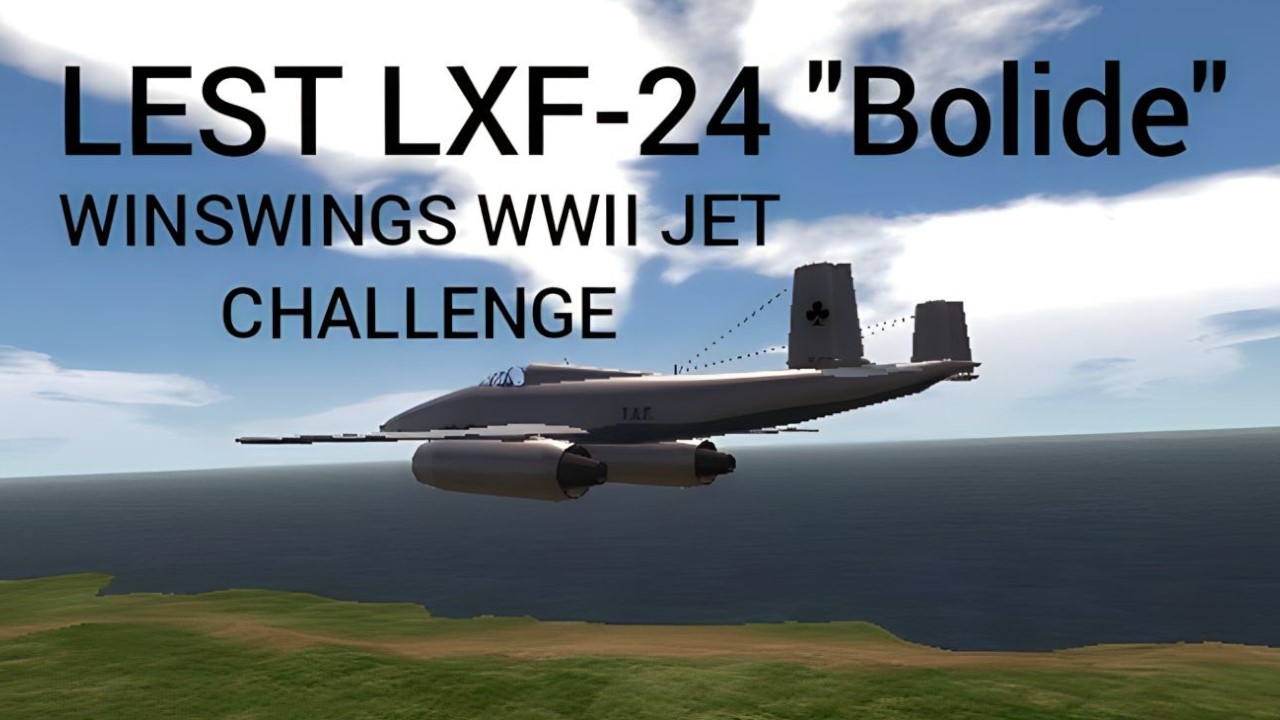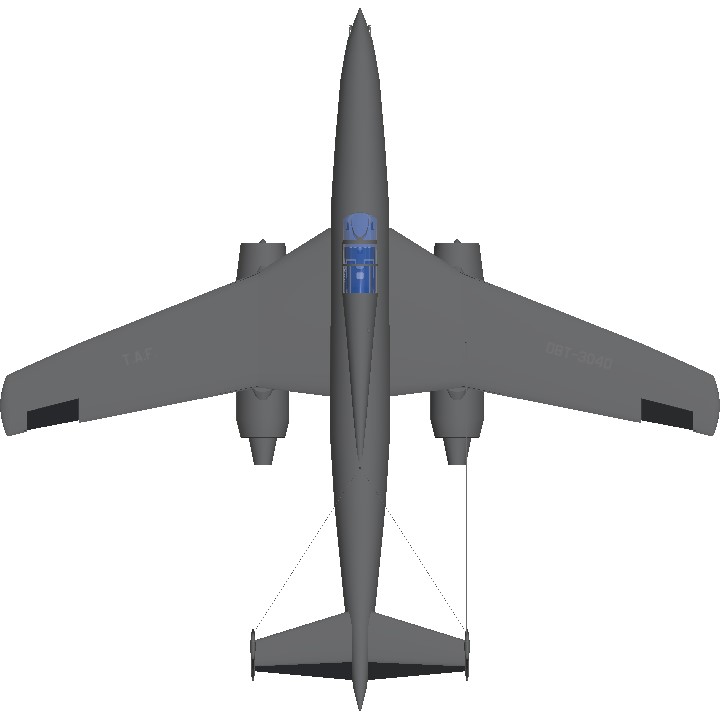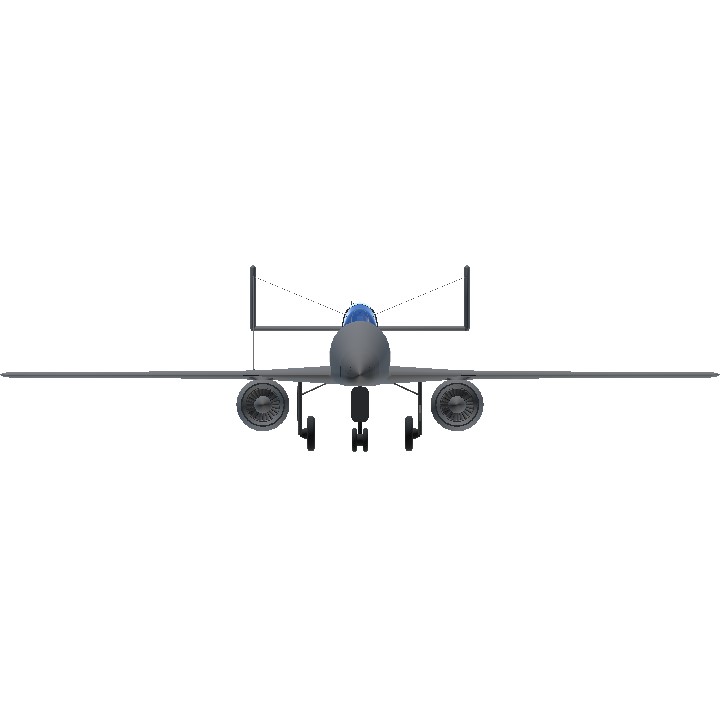This plane was built for the WINSWINGS WWII jet challenge.
The Lest LXF-24 "Bolide" is a medium range jet fighter designed by the Lest office in the 1940s for the Transboskian Air Force.
This is the first jet aircraft model built in Transboskia which has two Frans & Jhon FJ-546 engines of 6 tons of thrust each.
Development.
The plane was a great revolution at the level of construction and engine Technologies
The engines were built by Frans & Jhon, a pioneer company in the field of aircraft engines, the engines they manufactured were a masterpiece of Transboskian engineering, the jet engine manufactured by Frans & Jhon named FJ-546 was one of their newest engines which were reliable, but needed adequate and rigorous maintenance to keep them operational during their 2-year useful life.
The fuselage and the wings of the plane represented a great challenge since the plane had no design precedents, the fuselage is totally metallic and has approximately 50 sections, in the nose there is a space where the machine guns and their feeding system are located;
The wings were another challenge as they had to have a 25 degree sweep back so they could be aerodynamically efficient and structurally strong.
The configuration of the wings placed them in a low position and this made it easy to install the two engines closer to the ground and thus make their maintenance easier.
Its control surfaces were not complex and were easy to build, in flight the control surfaces helped make the plane easier to control.
The Horizontal elevator has Vertical stabilizers at its ends, giving it one of its most notorious design features.
The plane had an approximate development of 4 and a half years in which new ways of manufacturing its components were developed.
Revolutions.
The plane has a very advanced and simplified instrument panel that gives the necessary information to the pilot and among them we find: A sophisticated radio with 20 channels 50 frequencies and long range, its electrical systems are protected in a special compartment behind the pilot's seat, the electrical systems provide enough energy to the engines and radio.
Complications.
The plane presented several complications since the location of the engines did complicated the installation of the main landing gear but a solution was found which was that each leg would rotate 30 degrees and that they would be positioned separately when it was retracted.
The closed canopy prevented a clear view behind the plane, it was not a big problem since the pilots could see behind by moving their heads.
Technical Data:
- Engines: 2x Frans & Jhon FJ-546 of 6 tons of thrust each
- Armament: 2x 35mm caliber machine guns with 3000 rounds
- Maximum speed: 527km/h
- Minimum takeoff speed: 146km/h
- Cruising speed: 500km/h
- Maximum height: 6km
- Cruising altitude 5.1km
Activation groups:
- AG1:Engine 1
- AG2:Engine 2
- AG3:Canopy
- AG4: machine gun inspection door
- AG5: Engine inspection doors
Use the trim for better takeoff and landing
Screenshots
Main Landing gear closing

Engine View

Specifications
General Characteristics
- Predecessor WW2 Jets Challenge 8/23 [CLOSED]
- Created On Android
- Wingspan 33.3ft (10.1m)
- Length 32.6ft (9.9m)
- Height 8.8ft (2.7m)
- Empty Weight 10,240lbs (4,645kg)
- Loaded Weight 23,340lbs (10,586kg)
Performance
- Power/Weight Ratio 0.866
- Wing Loading 10.4lbs/ft2 (50.5kg/m2)
- Wing Area 2,254.4ft2 (209.4m2)
- Drag Points 4820
Parts
- Number of Parts 378
- Control Surfaces 6
- Performance Cost 1,607






